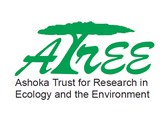Agasthya
A newsletter on the Natural History, Ecology
and Conservation of the Agasthyamalai region, Western Ghats, India.
Any and all opinions expressed in this newsletter are solely those of the author(s) and do not reflect the opinion of ATREE.
A S H O K A T R U S T F O R R E S E A R C H I N E C O L O G Y A N D T H E E N V I R O N M E N T
Will Susan get evicted from her home?
- R Ganesan
Susan-Holme a euphorb cactus became a familiar plant not only among ‘Clean-KMTR’ campaigners and the Forest Department staff but also with campers. Campers spill over the rock area during festival, cut the plants or clean the rocky area around their base which destroys the habitat of these mute plants. ATREE, Forest officials and Temple Trustees decided to protect the plants from the onslaught of campers. One strategy was to familiarise the plant among the campers. During the pre-festival awareness campaigns, pictures of the Susan-holme euphorb cactus and its occurrence nowhere else in the world except in that region was stressed. A few display boards with picture of the plant and other information about its rarity and an appeal for protection of its habitat were installed in the area. Interestingly, our team reported that some children remembered the name and the plants location close to the temple. We really were an elated bunch basking at the success of campaign, when a green brigade (student ambassador) ran to us with news, that campers had started pitching their tents and cloth-lines not only on the tree but also on the metal
display boards.
Unfortunately, one of the Susan-Holme plant and the display board next to it fell due to the weight of the tent. We had to seek the help of men in uniform to persuade the campers to remove the tents and cloth-lines. The campers expressed innocence about the rare plants after they were apprised by their own children about `Susan’.
Susan anchors herself daintily on rocky crevices through her thick and fibrous roots forming a mat which surrounds the trunk of the plant. This root mat acts as a sponge in trapping the run-off rain water over the rocky surface and accumulates soil and other muck to support their nutritional demands. The root mat around the trunk also provides habitat for a few other herbaceous plants. Chances of seeds produced by the surviving few trees land in the thin layer of soil and muck over the rock are remote making it rare and vulnerable.
Centre for Excellence in Conservation Science
Royal Enclave,Srirampura,Jakkur Post
Bangalore-560064
Telephone: 080-23635555 (EPABX)
Fax : 080- 23530070
Editorial Team
Editor: M. Soubadra Devy
Associate editor: Vivek Ramachandran
Editorial Review: R. Ganesan, T.Ganesh
Design and presentation: Vivek Ramachandran








